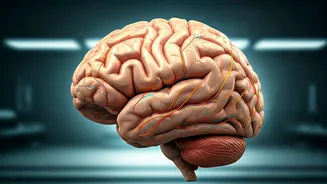Initial Attraction Explained
The concept of love at first sight is often portrayed as an undeniable, immediate connection, but the science behind it offers a different perspective.
When we experience initial attraction, our brains release a cocktail of neurochemicals, including dopamine, norepinephrine, and serotonin. These chemicals create feelings of euphoria, excitement, and infatuation, which is sometimes misinterpreted as love. The brain's role is crucial in this process, as it quickly assesses potential partners, often based on superficial cues such as physical appearance, and personality traits. This initial assessment happens rapidly, and in this process the brain fills in the gaps with expectations and past experiences. The perceived spark often stems from how well someone matches our ideal image of a partner, rather than a deep, meaningful connection. Therefore, the ‘instant connection’ is more about the brain's initial assessment than actual love. This initial assessment and attraction is not necessarily a precursor to a relationship.
Beliefs vs. Science
Despite scientific findings suggesting that love at first sight isn't a reliable predictor of lasting relationships, many people still believe in it. The appeal is understandable; it provides a sense of romance and excitement, and the idea of an immediate, effortless connection is very attractive. Societal influences, such as movies, literature, and cultural narratives, play a significant role in perpetuating this belief. These stories often emphasize the idea of destiny and an unbreakable bond formed at first glance. However, scientific research reveals a different story. Studies show that couples who report love at first sight are not always as satisfied or successful in the long term, compared to those whose relationships developed over time. This discrepancy illustrates the contrast between romantic ideals and the practical realities of building a successful relationship. The illusion of love at first sight tends to fade as the initial infatuation fades away.
From Attraction to Love?
While love at first sight might not be true love, it can potentially evolve into a deeper, more enduring connection. The initial attraction can be the starting point, but the evolution into real love requires more than just chemistry. It involves building a foundation of shared experiences, mutual respect, open communication, and shared values. As time goes on, the initial infatuation subsides, and deeper understanding becomes possible. Couples can build a strong bond through shared experiences and by supporting each other's growth. This transition requires active effort from both partners, including the ability to resolve conflicts, offer empathy, and make compromises. If the initial spark grows into something that withstands the tests of time, love can develop. In this process of developing genuine love, partners can experience real emotional intimacy and develop a lasting connection.
Factors for Lasting Love
Building a lasting relationship involves several key factors that often get overlooked in the initial rush of attraction. Effective communication is essential, allowing couples to share their thoughts, feelings, and needs openly. Mutual respect for each other's boundaries, differences, and opinions is also critical. Shared values and goals provide a common foundation, ensuring that partners are aligned in their long-term vision. The capacity to resolve conflicts effectively is also essential; healthy relationships involve facing problems head-on, engaging in open discussions, and finding solutions that work for both parties. Trust and loyalty are cornerstones of any lasting relationship; these require honesty, dependability, and a commitment to each other's well-being. By addressing these factors, couples can develop deep bonds, build a strong foundation, and create a lasting, meaningful relationship.
Reframing First Impressions
Instead of viewing instant attraction as a sign of true love, it is essential to reframe first impressions as the start of a possible journey. Recognizing initial feelings as potential for future growth allows for a more realistic and grounded approach to relationships. When encountering a potential partner, try to be more mindful, and resist the urge to jump to conclusions, and make decisions based on an initial spark. Give yourself and your partner time to get to know each other, allowing the relationship to unfold naturally. Focusing on mutual compatibility, shared interests, and values helps you to assess long-term potential. Remember, real love is built over time and with effort, and is not something that happens instantaneously. By reframing our initial impressions, it becomes possible to build a strong foundation, leading to relationships that stand the test of time.













